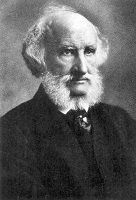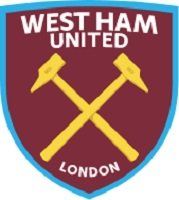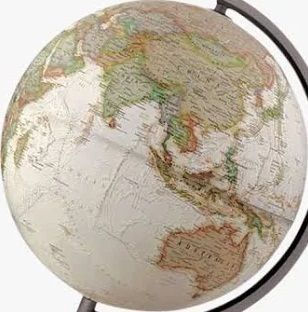
Currie, Swifts, Iron and Ham



In 1825 a laddie was born in Greenock. He was the son of a hairdresser but his life would take an entirely different course. You might have heard of him, particularly if you are a rugby fan, and especially a South African one because there the main competition played for to this day is the Currie Cup and the wee man in question was Donald Currie, in fact Sir Donald Currie.
The Currie Cup is inter-provincial. It had its playing origins in 1884, became official in 1889 with the foundation of the South African Rugby Board but did not acquire its name, indeed today's trophy, until 1892. In 1891, so with Donald Currie already aged sixty-six and, remembering both organised Rugby- and Association-Footballs as we know them today have their origins at the same London meeting in 1863, certainly not player then or even as a young man, a British Isles team left for the first ever tour to the Cape Colony and its interior. And it was that team that en route, by sea of course, was presented by Currie with a golden trophy to be given to the best opposition the British team would come across on the tour with the cup staying south and soon replacing the silver one the SARB had employed till then.
Currie interest in the British Isles rugby team was probably little more than publicity with it traveling to Cape Town on one of his ships, the wee boy from Greenock having in 1862 founded Donald Currie & Co, that became the Castle Line and later 1900 Union Castle Lines. They, the shipping lines, sailed from London, specifically the East India Dock, and Southampton at first to India via the Cape of Good Hope and then with the opening of the Suez Canal just to South Africa. It was the culmination of business journey that had taken Donald Currie himself from the family moving to Belfast the year after his birth, the loss of his mother at the age of fourteen and he at that same age returning to Greenock to work in the sugar-refining business of his uncle. Then four years later at eighteen he joined Cunard in Liverpool as a clerk, in time becoming head of its cargo department and setting up offices in Le Havre, Paris, Bremen and Antwerp before in 1862 aged thirty-seven going into business initially with his elder brother, James, on his own account and in 1864 moving his own operations from Liverpool to London.
And over the next thirty years both brothers prospered with to service his growing fleet from 1878 Donald acquiring land in London in Canning Town at the mouth of the River Lea, which over the next decade become the company ship-repair yard. There he employed a growing workforce, which was said in large part to be drawn from Scotland, where his brother had been running his shipping interests out of Leith. It is therefore hardly surprising that Donald Currie's ex-patriot employees would have played football. And, whilst Millwall, a club also with its own very Scots origins, was then still playing on the Isle of Dogs, so just a three miles away but on the other side of the river, it was agreed in 1891 to found not just a a works team but from 1892 a football club subsidised by the company. Donald Currie clearly had no prejudices when it came to round or oval ball.
The new club adopted the name Castle Swifts and we know the team with which it would in that first 1892-3 season win the West Ham Charity Cup with on the one hand some players drawn from the existing, local, amateur team, Upton Park but on the other the Scots influence obvious, with at least six of the eleven likely from North of the Border. It was:
Lewis, A. McFarlane, Benbow, Leith, W. McFarlane, Baird, Murray, Mitchell. Fraser, Taylor and Grundy
The McFarlanes were probably brothers, born in Forres, a plumber and a Marine Engineer, as were Andrew Fraser and Mitchell, possibly John, born in Glasgow, although he could equally have been Apprentice Boiler-maker, David. Then Taylor was probably Robert, a Scots-born engineering smith and Murray, like his employer also Greenock-born.
And the Scots input continued, albeit watered down, as in 1893-4 several players with another, local clubs, Old St. Lukes, the club name was changed to Old Castle Swifts, in 1894-95 players joined from Millwall, at least one, Jamie Lindsay, and possibly two Scots, and one, Robert Stevenson via Woolwich Arsenal from Barrhead. But it was one of the Millwall newcomers, Cunningham, who would, if indirectly, lead to the demise of the young club. He had been professional, wished to return to amateur status and was refused by the English FA. It prompted the Swifts in response in November 1894 to become fully professional but the increased costs meant that just prior to the end of the season Currie withdrew his financial support and by March 1895 the club was bankrupt.
Now that might have been the end of the story. However, on the other side of the mouth of the River Lea to the Currie yard was that of the Thames Ironworks and Shipping Co. Ltd. Its chairman, Arnold Hills, who had played for Harrow, won two football Blues at Oxford, was part of the University's losing Cup Final team in 1877 and in 1879 had won a single England cap in the infamous, lone defeat of Scotland in 1879, so a full football man, and with the encouragement of an employee, another Taylor, David in this case, for whom there appears to be but one candidate, a Engineering Turner living in Canning Town, who was a local referee, saw the Swifts' collapse as an opportunity to form his own company team. It was up and running for the 1895-6 season and took on several of the Swifts players, notably Lindsay for a season, he being a boilermaker at the Ironworks yard, and Stevenson, who became captain for two seasons, the pair two of the seven Scots in that first squad.
Thames Ironworks would continue throughout its existence to have a strong Scots contingent. At its lowest it was four in the squad and its highest in 1898-99 eleven. And it was the year that the Southern League Second Division championship was won, with the team staying up the following season. However, just as had been the case with the Swifts six seasons earlier there was at that point a material change of circumstances. In this case Thames Ironworks both expanded and became a limited company. As a consequence its football team at the end of June 1900 was formally wound up and resigned from the Southern League. However, it was done so on the understanding that its League place would be taken by a new and still local entity to be called West Ham United. It was formed just five days later keeping twelve of the Thames Ironworks players on its books. At least four were Scots - Reid and McEachrane, Alan and Craig - to whom were added four more. And there were eight again the following season as the new club played at the Memorial ground, funded still by Arnold Hills, before in 1904 moving to the Boleyn ground, otherwise known as Upton Park. A circle was complete - Upton Park to Upton Park - in which time the essentially Scots Swifts not once but twice over had become the original and remain the current Hammers of London's East End.
